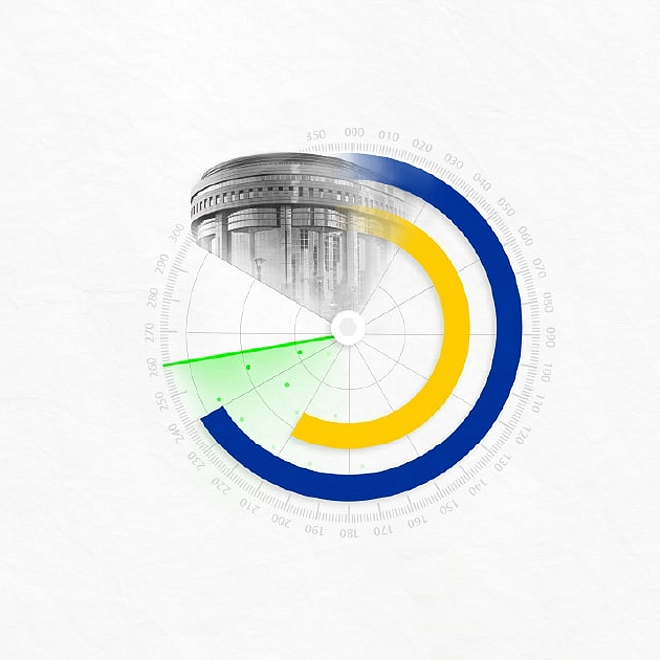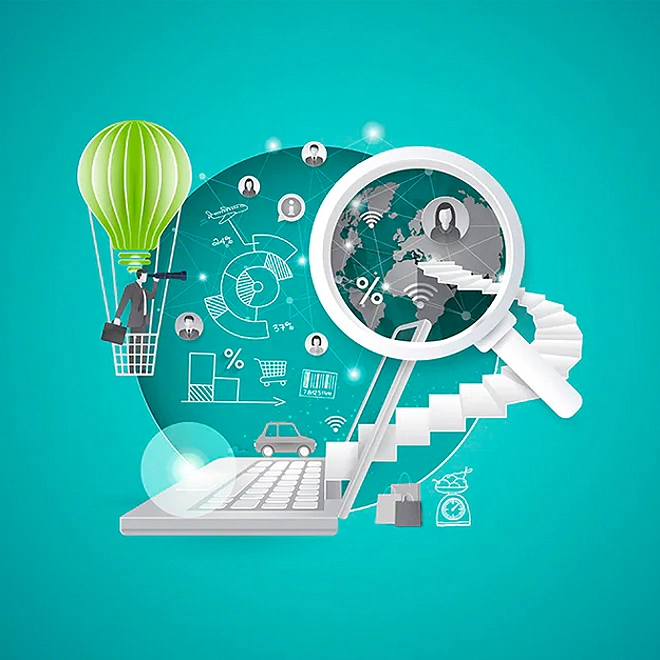Sizzling food prices are leading to global heartburn
Food prices have surged to record highs since the start of the war. For many around the world, even regular meals may soon become too expensive.
Just when it seemed that the pandemic had given way to hope and healing, the world economy suddenly finds itself jolted by the drumbeats of war, rising commodity prices,1 and a return of the inflation bugbear. When Russia invaded Ukraine in February, the initial panic was felt primarily in global energy and financial markets. But as the conflict drags on, people across the world are horrified not only by the human tragedy of the war, but also by the surging cost of providing food for their families.
Ukraine and Russia are major agricultural producers and exporters.2 Yet much of Ukraine’s food exports are currently stuck in fields and ports that cannot be accessed by the wheels of international trade. Continuation of the conflict also puts at risk the sowing of crops later this year in Ukraine, which will weigh on global wheat, barley, maize, rapeseed, and sunflower production. Couple that with rising fertilizer and fuel prices, and it seems there is a perfect storm brewing in global agriculture. No wonder, then, that food prices as measured by the Food and Agriculture Organization’s (FAO’s) Food Prices Index are at their highest level since the series started in 1990 (figure 1).3
While high food inflation impacts all of us, low-income countries and families will be the most affected. Subsidies in the near term may help, but for some countries, continued fiscal support will be difficult as government finances have already been battered by two years of COVID-19.4 These economies therefore run the risk of something worse—economic and social instability.

Food prices were on the boil before the war
It would be incorrect to solely blame the ongoing conflict in Ukraine for high food prices. Prices have been rising—and quite strongly—since mid-2020. Between May 20205 and February 2022, FAO’s Food Price Index went up by 55.2%, led by a 159.4% rise in prices of edible oils, followed by strong growth in prices of sugar, dairy, and cereals (figure 2). Multiple factors can explain this surge.

- Economic recovery has pushed up prices: In May 2020, food prices fell to their lowest levels in four years, partly due to the pandemic, as economic activity declined sharply in the wake of lockdowns and other social-distancing measures across the world. As global economic growth started to recover—global GDP is estimated to have grown by 5.9% in 2021 after a 3.1% contraction in 20206—commodity prices, including that of food items, started receiving a boost. The pandemic also severely impacted global and domestic supply chains, and food supply chains haven’t been spared either.7 This has aided the uptick in food prices and contributed to a rise in global hunger.8
- Higher freight costs: Freight costs have gone up sharply since the initial months of the pandemic. While shipping and logistical challenges due to lockdowns and safety restrictions (from the virus) are one reason for high freight rates, rise in fuel prices has also added to the misery. Since May 2020, the Baltic Dry Index9—an indicator of freight prices—has gone up by nearly 400%, although this data point masks an even sharper spike seen in the second half of last year (figure 3). Figure 3 also shows the sharp recovery in crude prices after sliding in the first four months of 2020. Food transportation and energy used in food production are, therefore, much more expensive now than in early 2020.

- Fertilizer prices have increased: A key reason behind rising food prices is higher fertilizer costs. Fertilizers are an essential ingredient in the food-production process and prices of major fertilizers have been going up sharply (figure 4). For nitrogen-based fertilizers, the major cause of high prices is the rising price of natural gas—another key component in food production. Average monthly natural gas price, as indicated by the World Bank’s Natural Gas Index, went up by nearly 600% between June 2020 and December 2021.10 The high cost of transportation hasn’t helped either, as is evident in trends for the Baltic Dry Index shown in figure 3. Export restrictions have also pushed up fertilizer prices. For example, China, which is one of the world’s leading exporters of phosphate, put restrictions on its export in 2021, amid tight domestic supplies.11

- Export restrictions increased during the pandemic: As the COVID-19 pandemic intensified in 2020, there were increasing concerns about food availability, leading to grain-producing countries imposing export restrictions.12 Vietnam, which had a 16% share in global rice exports before the pandemic, held back on granting rice-export certificates till the end of April 2020. Kazakhstan suspended exports of several cereal products, oilseeds, and vegetables until June 30, 2020,13 while Russia placed restrictions on the export of items such as wheat, corn, and meslin.14 Consequently, food prices started picking in the second half of 2020, with the prices of cereals and edible oil witnessing strong growth since then.15
The conflict in Ukraine has made things worse
Food prices, already on a steady rise, received a further push from the conflict in Ukraine. According to the FAO, food prices went up by 12.4% in March from February and by 33.6% compared to a year back. And it is likely that the surge in March wouldn’t be the last, especially if the conflict drags on for a much longer time. There are three key reasons for this.
First, Ukraine accounts for nearly 10% of global wheat exports.16 With a war raging on its soil, breakdown of internal transportation, and a blockage on its coastline by Russian warships, the country’s export shipments have been disrupted. Ukraine also accounts for more than a quarter of the world’s production of sunflower seed. With supply disruptions and fears of more to come, sunflower oil—a major derivate of sunflower seed—is witnessing sharp price hikes. This has, in turn, led to higher prices of alternatives to sunflower oil as well, as shown in figure 2. Russia too is a major agricultural exporter with major shares in global production of sunflower seed, barley, and wheat—it accounts for 18% of global wheat exports. While the war hasn’t touched Russian soil and no sanctions have been imposed on Russian agriculture, potential buyers will likely face problems in payments, given that a large section of the Russian banking sector has been sanctioned (key Russian banks were excluded from the SWIFT payments system in March).17 No wonder then that FAO’s price index for cereals shot up by 17.1% in March, while its index for edible oils rose by 23.2%.
Second, the war is also driving up the cost of food production. While fuel and transportation costs have gone up, as figure 3 shows, so have the prices of fertilizers, an essential ingredient for crop yields. While the average monthly price of urea went up 22% in March, diammonium phosphate prices grew 25.6% during the month.18 The uptick in prices in March, however, isn’t surprising as the price of natural gas—a key input in producing nitrogen-based fertilizers—went up by 38.2%19 during the month on fears of supply disruptions due to the Ukraine-Russia conflict. There are also worries about disruptions to global fertilizer exports from Russia and Belarus—two countries that have also been hit by sanctions. Russia is a major exporter of nitrogen, potassium, and phosphorous fertilizers, while Belarus, which had been under sanctions even before the conflict in Ukraine, is a major producer of phosphorous fertilizers.20
Third, as the conflict continues, it will impact the planting of new crops in Ukraine. The continuing blockade of the country’s coast and the destruction of its ports and internal transport networks will keep the pressure on global food trade. Soaring fertilizer prices, meanwhile, may result in lower use of fertilizers, thereby denting crop yields in major fertilizer importers. As shipments from Russia and Belarus face disruptions, fertilizer importers from these countries may be forced to diversify or use alternate systems to make payments to the two sanctioned countries—that may not be easy, given the current sanctions.21 Diversifying imports or boosting domestic production also raises uncertainties in the near term and loss of competitive advantage, thereby raising costs. Further, as food prices rise, the risk of export restrictions has gone up as countries try to protect domestic supply. In April, for example, Indonesia put restrictions on palm oil exports citing high domestic prices. While this will increase global palm oil prices, it will also push up prices of other edible oils and fast-moving consumer goods that use edible oil (including palm oil) as inputs.22
Low-income households and major food importers are feeling the pain
As food prices surge, those at the lower end of the income ladder will be hit the most. Low-income households typically spend a higher share of their income on food items compared to middle- and high-income families.23 Furthermore, low-income households spend more on food types that have risen most in price. For example, staple foods such as cereals and breads constitute a higher share of diet of poor households—all of which have recorded strong growth in prices.24 Across countries, developing economies typically have a higher share of food in their overall consumer baskets—and hence in their Consumer Price Index (CPI)—compared to advanced economies. For example, food and beverages account for 54% of CPI in Ethiopia and 50.7% in Nigeria, compared to just 11.6% in the United Kingdom.25 Consumers in these countries will likely face a bigger hit, on aggregate, from rising food inflation (figure 5) than their counterparts in affluent countries. Also, food is a necessity compared to other consumer goods and a broad price rise across key food segments—as evident from the FAO indices—means that people won’t be able to substitute them for cheaper products. The result may be weakened discretionary spending, especially for low-income households. High fuel prices will only make things worse.

The combination of higher food costs and low incomes also has the potential to undo some of the global gains in poverty alleviation achieved over the past two decades. According to the World Bank, the pandemic, in tandem with high inflation and geopolitical tensions, will likely lead to an additional 75 million to 95 million poor people in 2022, compared to prepandemic forecasts.26 And according to the annual Global Hunger Index, an absence of food supplies could lead to an increase in malnutrition and hunger in nearly 60 countries—an increase from 47 countries before the Russian invasion of Ukraine.27
Unfortunately, rising food prices comes at a time when economies have just emerged bruised from two years of a pandemic. During this period, as economic activity faltered, many governments stepped up to support consumers and businesses. Consequently, debt and deficit levels have risen on average across the globe.28 For developing nations, however, the deterioration in the fiscal math also comes at a time when debt-servicing costs are set to increase as the world’s major central banks focus on monetary policy tightening. Among the world’s low-income economies, 60% are estimated to be either in debt distress or at a high risk of it while the financial burden of servicing past debt has gone up to its highest level in 30 years in middle-income countries.29 Such fiscal stress will restrict the ability of these countries to provide relief to their people through subsidies and transfers. And currency weakness for some may raise the burden of purchasing food in the global market where most commodities are priced in dollars. That may not augur well for social and economic stability. Isolated incidents of protests, driven by soaring food and fuel prices and the pandemic’s economic fallout, have already been reported from various parts of the world.30 Countries in North Africa and Asia that primarily depend on Russia and Ukraine for key food requirements may fare far worse if the conflict continues for long.
Keep an eye on potential disruptions
One of the Sustainable Development Goals of the United Nations is to end world hunger by 2030.31 However, first the pandemic and then the conflict in Ukraine may likely end up reversing years of progress in reducing global hunger. The upheaval in global food markets since 2020 also serves as a warning that the world must be better prepared for global disruptions in the future, such as climate change. Recent research reveals that over half of all shocks to crop production systems globally result from extreme weather events—with droughts causing the highest damage.32 Changing precipitation patterns and increasing temperatures have also put the food system under pressure.33 According to FAO estimates, global mean yields of maize have declined by 3.8% and wheat by 2.5% between 1980 to 2008 due to climate change.34 Failure to learn lessons from the last two years with regard to preparing for other challenges may therefore mean that the world gets hungrier and even more unequal. That will not only be an economic setback, but also a global tragedy.
Deloitte Global Economist Network
The Deloitte Global Economist Network is a diverse group of economists that produce relevant, interesting, and thought-provoking content for external and internal audiences. The network’s industry and economics expertise allows us to bring sophisticated analysis to complex industry-based questions. Publications range from in-depth reports and thought leadership examining critical issues to executive briefs aimed at keeping Deloitte’s top management and partners abreast of topical issues.



